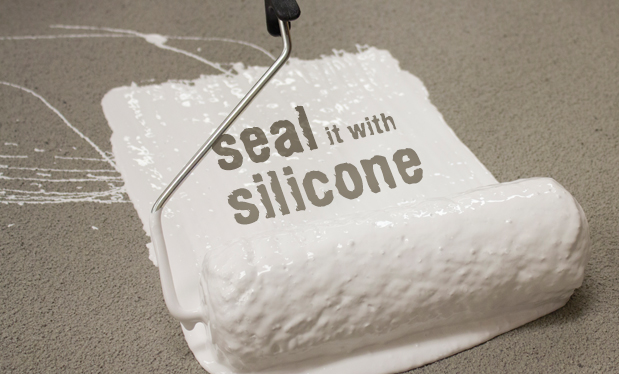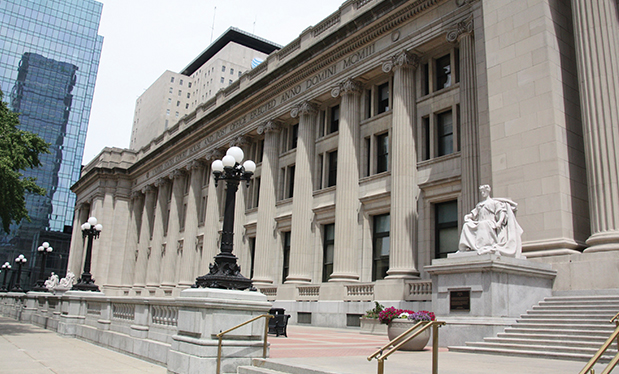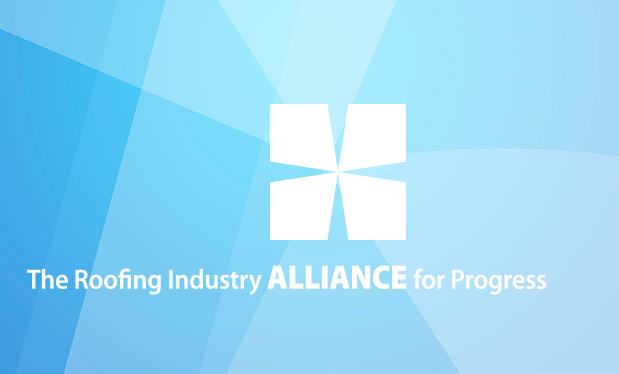Creating a safety culture at a company is a challenging yet rewarding undertaking that ultimately ensures employee satisfaction while increasing work quality and professionalism. At RSS Roofing Services & Solutions, St. Louis, our employees benefit from a tradition of safety practices established by commitment, communication and empowerment of our leadership team. In turn, they are expected to exercise strict adherence to safety policies and procedures and communicate openly about any potential hazards. This combination of responsibilities upheld by leaders and employees is the key to creating and maintaining an authentic culture of safety.
The challenges of safety
A primary challenge when addressing safety policies and procedures is overcoming financial concerns. To some, the perceived cost of safety measures may outweigh any potential benefits to the company. An example of this would be believing a large financial investment in safety equipment is unnecessary or a waste of funding if it is not specifically required on job sites or not being used by competitors. In either of these cases, the assumption is the financial cost of the safety precaution is greater than any benefits—financial or otherwise—the equipment could bring to the company.
Another challenge that poses an obstacle to implementing safety precautions is how difficult it can be to measure their effectiveness. With all the training, protocols, inspections and other safety precautions that are implemented, it can be challenging to determine which, if any, of these safety protocols directly contributed to an increase in worker safety.
In general, two metrics are used to measure employee safety: lagging and leading indicators. Lagging indicators are more commonly used and generally measure the number of various types of incidents. The Total Incident Rate (TIR) or Total Recordable Rate (TRR) shows the number of Occupational Safety and Health Administration- (OSHA-) recordable injuries a company has experienced for every 200,000 man-hours worked. Closely related are Lost Time and Restricted Time rates. These often are combined to calculate the DART (Days Away, Restricted or Job Transfer) rate. Although the TIR includes all recordable injuries, the DART includes only injuries severe enough to require time off of work or returning to work with modifications or restrictions. Restrictions, such as "no lifting more than 10 pounds" or "no climbing," are determined by the treating physician.
Leading indicators are proactive safety measures that are best used against your company's previous experience and are difficult to compare with other companies in your industry. Examples of leading indicators include the frequency of safety meetings or training sessions, observations about safe behaviors or conditions, and equipment and site inspections.
Finally, a long-standing obstacle to increased safety is the mentality of industry veterans who are not accustomed to newly developed safety practices. Just a few decades ago, safety was unregulated with little or no specific procedures to follow on job sites. The dominant thinking at the time was safety procedures decreased the efficiency and productivity of a job while increasing the cost.
Also, some workers have gone their entire careers without an injury on a job site. Those workers may not have been working safely but have been fortunate enough to never have an accident. As a result, they may think safety precautions are unnecessary. This mentality of downplaying the importance of safety procedures must be addressed to establish effective safety practices within a company.
The culture of safety
A culture of safety is not derived from a safety manual or training sessions; it is lived out daily by company leaders and adopted by employees. This culture cannot be enforced through policy or legislated in any way. It must be demonstrated repeatedly and reinforced through complete buy-in from ownership and executive management. Setting a good example of safety culture for employees requires a genuine commitment from company leaders who constantly put safety regulations into practice and avoid cutting corners in any way. This commitment could express itself in several forms from wearing personal protective equipment (PPE) on job sites to following simple safety rules and frequently acknowledging when employees exhibit safe behavior.
At RSS Roofing Services & Solutions, the governing mentality is to work safely above all else even if it means taking longer to complete a project. Employees are not expected to take shortcuts to finish a job on time. In fact, the opposite is true—there are negative repercussions for employees who disregard safety procedures to meet deadlines.
RSS Roofing Services & Solutions has two mottos that embody the culture of safety at the company. "If it's not safe, don't do it" is a simple reminder to employees to always be aware of their surroundings on job sites. This motto also gives all RSS Roofing Services & Solutions employees what we call Stop Work Authority, or the right to stop work on any job site that could be considered unsafe. If work has to stop to ensure the highest level of employee safety, RSS Roofing Services & Solutions considers that to be time well-spent.
"Show me you care, make me aware" serves as a companion to the first motto and is intended to encourage employees to point out any safety hazards they observe that others may not recognize.
The culture of safety at RSS Roofing Services & Solutions has minimized the number of incidents on job sites compared with the industry average. During the past three years, RSS Roofing Services & Solutions has recorded less than half the injury amount with a TIR of more than 55 percent below the industry average. Although these results speak for themselves, the true indicator of a culture of safety is the commitment shared by every employee to maintain it.
Authority figures
Company leaders must fulfill certain responsibilities for a culture of safety to become a reality. Daily, employees are influenced by the examples set by those in authority. A company that truly embraces a safe mentality must be led by owners and managers who are completely dedicated to fulfilling their responsibilities of creating a safer environment for their employees.
Commitment
Most companies have slogans such as "Safety is Priority No. 1" or "Safety First." At RSS Roofing Services & Solutions, we place safety as a value not a priority. The key difference is priorities change; values remain constant. Priorities are subject to the current climate or conditions of a company or project. Values never change despite schedule, budget, manpower or any other challenge. Safety is a value to which company leaders must be fully committed to make a real, lasting difference.
One way to make safety a value is to view safety as an investment rather than another operational expense. This is a matter of perspective. In business terms, an expense is a pure cost with no immediate return, such as utility bills or taxes. On the other hand, an investment is a cost that comes with a return whether immediate or long-term. If spending money on safety precautions is seen as a business cost, the return will not immediately be apparent. However, if safety is viewed as an investment in creating a safer, more productive workforce that ultimately saves money, the return eventually will become apparent.
For example, with a $4,000 purchase of fall-protection equipment, a company's management team has the option to view this purchase as a regular expense or an investment in increased safety. Although the equipment may not result in direct financial savings, it has the potential to prevent personal or financial tragedies that could have occurred otherwise. The return on the investment may not be quantifiable, but based on the company's perspective, the equipment could be far more valuable than its purchase price if it prevents an injury or a fatality.
Discipline
Another important safety aspect company authority figures must be committed to is discipline. This can be difficult, especially with long-term employees. The key is to enact a broad, consistent disciplinary policy that applies to everyone in the company and removes any possibility of favoritism.
Some companies that have had safety policies in place for years without properly enforcing them may catch certain employees off guard if long-standing habitual behavior is suddenly corrected. If these employees refuse to comply with safety policies or the enforcement of existing policies, disciplinary action ranging from mandatory safety training to termination is absolutely necessary.
When implementing safety-related disciplinary actions, consistency is crucial. If one employee is reprimanded more harshly than another, the company's disciplinary tactics will come into question and the reason for the discipline will be forgotten. It is best for leadership to establish a disciplinary policy and follow it closely with all employees no matter their position or length of time with the company.
In addition to consistency, disciplinary action must be proportionate to the offense. If an employee believes a form of discipline is too harsh, he or she is likely to resent the experience rather than learn from it.
Finally, disciplinary action always must be documented. One method of defense against an OSHA citation is citing an instance of employee misconduct with well-documented disciplinary action. This documentation serves as evidence and can help distance the company from any wrongful behavior on the part of an employee. It also is useful for general record-keeping purposes.
Messaging
To effectively establish a culture of safety within a company, communication from leadership is absolutely essential. The messaging presented to employees regarding safety policies must be clear and thorough, and those in positions of authority should be just as willing to listen as they are to talk. Without a clear line of communication with supervisors, employees will not be able to achieve the level of safety expected of them. Questions will go unanswered and policies may be inadequately explained if communication is not clear. Thoroughness also is important. A minute detail that is accidentally left out during a safety meeting could prove harmful or even deadly on a job site.
Communication is more than just effectively conveying information to employees. Company leaders must listen to feedback from workers and incorporate that feedback into the overarching safety plan. Once this level of trust is established and employees feel comfortable providing feedback about job-safety conditions, incident rates could see a significant drop.
Empowerment
It is the sole responsibility of company owners and managers to provide employees with the resources they need to achieve optimal levels of safety and empower them to do so. Improvement in job safety cannot be expected without a leadership team that enthusiastically supports every employee's success with properly following safety regulations.
Training
The primary means of empowering employees to follow safety regulations is through comprehensive, ongoing training and educational programs intended to not only educate employees but also to encourage them to adopt the culture of safety already present within the company. Although training can be seen by some as a chore, it is essential for every employee to have the same mindset toward the importance of safety policies.
At RSS Roofing Services & Solutions, basic safety training for new hires incorporates the following:
- Fall protection
- PPE
- Hazard communication
- Ladders
- Material handling
- Housekeeping
- Hearing conservation and protection
- Tools and equipment
- Other/miscellaneous safety concerns
After an employee is provided information about these areas of safety, he or she should be informed of the company's history. Maintaining a feeling of family and culture is vital within a business, particularly one that has existed for several decades. Expressing a sense of pride in the history and culture of a company will encourage new employees to positively contribute to the team and take pride in their work.
In addition to basic safety training, all RSS Roofing Services & Solutions employees complete OSHA 10-hour training, and all supervisors meet OSHA 30-hour training.
Supervision
Supervision is important to minimize the risk of job-site incidents and to further support the safety ideology of the company as a whole. Site supervisors should provide safety coaching and encourage all employees to create a positive, safe environment that promotes compliance with safety procedures.
Part of a supervisor's responsibility at RSS Roofing Services & Solutions is regularly conducting toolbox talks and safety meetings. These short meetings often address an individual safety topic and the correct safety procedures as a reminder to employees. Recurring dialogue about safety policies is important to keep the information fresh in the minds of employees so it easily can be recalled within a moment's notice.
Supervisors also are expected to conduct effective self-audits regarding safety compliance. Each RSS Roofing Services & Solutions supervisor is given a checklist and taught how to identify correct safety standards in compliance with OSHA regulations. RSS Roofing Services & Solutions chooses to empower each of its supervisors to conduct self-audits rather than delegating that responsibility to management or OSHA. This practice rewards the supervisor for a job done well by encouraging his or her subordinates to adhere to all safety policies.
RSS Roofing Services & Solutions site supervisors are at the front line of everyday safety for each job. Their role is to oversee job safety at all times whereas a safety representative may only visit a job site a few times.
Equipment
Company ownership and executive management are directly responsible for providing employees with the proper type, amount and quality of equipment needed to complete a job in a superior manner. Supervisors should be aware of any existing needs, and management should not be held back by the financial ramifications of purchasing the correct safety equipment.
Employees
In response to the commitment, communication and empowerment given by the ownership and management team, RSS Roofing Services & Solutions employees are expected to fulfill their responsibility of following policies and procedures. Without the respect for these policies, a healthy employer-employee relationship cannot exist, and the safety culture will quickly erode.
Communication
Part of this responsibility is providing valuable feedback intended to be useful to supervisors. Constructive criticism from an employee regarding the safety conditions of a job site should be taken seriously by leaders. Employees have the benefit of firsthand experience regarding job sites and often are aware of solutions to problems. Part of a clear communication from an employee perspective is presenting solutions when discussing any type of criticism about safety conditions.
Professionalism
Another responsibility all employees should share is professionalism. Part of this responsibility rests on the management team to properly communicate what it means to be a construction professional, but a majority of the responsibility is assumed by employees. Employees need to be aware their conduct can be used by anyone outside of the company to make a snap judgement regarding the quality and professionalism of the entire company. Professionalism at all times is important for company recognition and safety policy effectiveness.
General guidelines
Owners and managers can be overwhelmed by the task of nurturing safety culture. Following are general guidelines aimed at simplifying the process and encouraging enthusiasm for safety practices at all levels of a company.
Inspections
A guideline to follow regarding inspections is to always conduct inspections to verify safety rules are being followed. This relates to the idea of "management by walking around," or being seen actively checking on conditions to make sure assumptions of safety conditions are correct. Scheduled and surprise visits to job sites allow project managers to demonstrate their knowledge of proper safety protocols and reaffirm management is adequately training employees. Being seen on job sites also promotes solidarity with the entire team and demonstrates a higher level of commitment than managers who never leave the office.
Open-mindedness
A company desiring to establish a healthy culture of safety should employ open-minded managers who are willing to learn in any situation regardless of the source. A result of open communication within an organization is the gradual evolution of safety procedures to reflect the thoughts and suggestions of employees with constructive feedback. When it comes to safety, an open-minded mentality is a necessity when creating a plan that meets the needs of every employee.
Motivation
One of the most important aspects of an effective culture of safety is motivating employees to follow the policies and procedures in the first place. Motivational factors used to encourage employees should consist of tangible rewards and supervisor acknowledgement. Structured incentive programs and spontaneous rewards for safety compliance are important for companies to offer new employees and keep track of a safety program's success, but acknowledging a job well-done can be equally as effective. Monetary rewards for following safety rules often do not affect behavior as much as a simple acknowledgement from a supervisor in front of an employee's peers. Acknowledgement gives the employee the opportunity to internalize that he or she has done the right thing. It also is important the management team or supervisor share the credit for a good safety record with all employees responsible for following the correct procedures.
At RSS Roofing Services & Solutions, the goal of the safety program is continuous improvement. Any company wishing to improve its safety record should be willing to examine its policies and attitudes toward safety at any moment and make changes that will positively affect the lives of its employees, family members of employees and anyone affected by the work done by the company. There is no finish line when it comes to implementing a culture of safety that effectively encourages employees throughout all levels of the company to value safety above all else.
Jeff Montgomery is corporate safety director for MHS Legacy Group, St. Louis, the parent company of RSS Roofing Services & Solutions, St. Louis.



